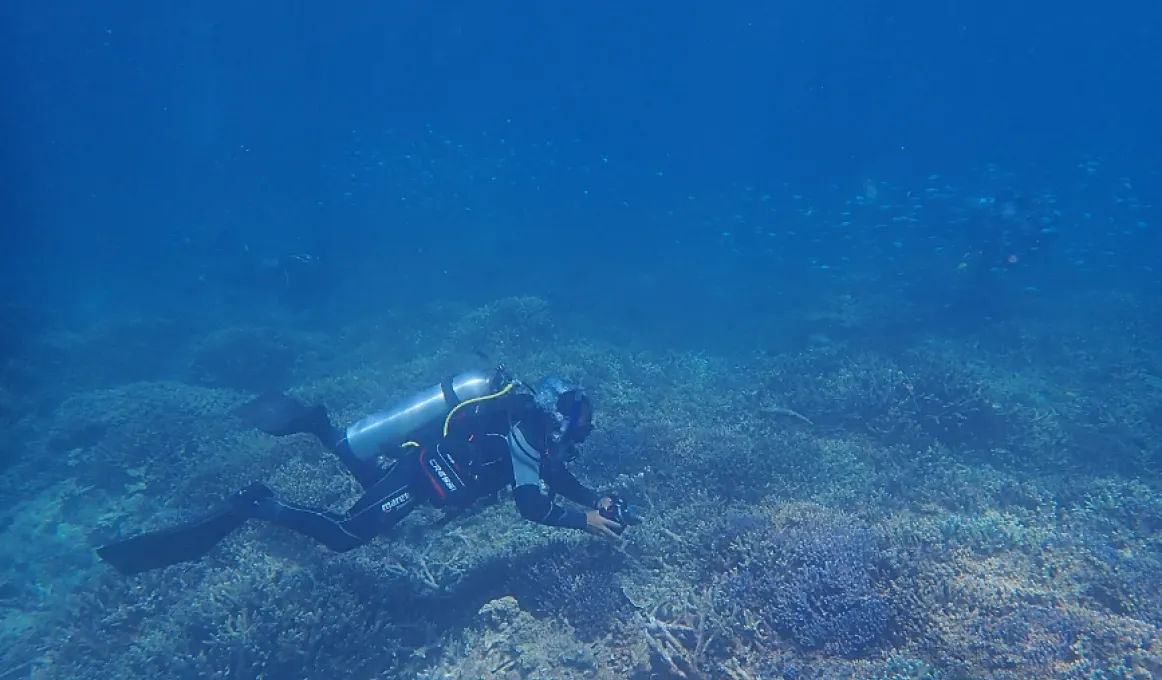Gidarjil Land and Sea Rangers monitoring reef health


During winter months Gidarjil Rangers and researchers from the University of Sunshine Coast work across 18 coral sites located in the southern Great Barrier Reef.
In Bundaberg, Queensland, the Gidarjil Bundaberg Land and Sea Rangers program is involved in a long-term, inshore monitoring project to ascertain coral reef health in the southern Great Barrier Reef (GBR).
Taribelang Bunda man and Senior Sea Ranger, Kelvin Rowe has dedicated his time to becoming a certified PADI Rescue Diver, enjoys working on Port Curtis Coral Coast (PCCC) Sea Country.
‘Diving on Sea Country means many things to me - it makes me feel more connected to my culture and to the land as a saltwater person. Also, I can take photos and videos to show the elders and community people who can’t get in the water or haven’t seen the reef or underwater for a long time,’ explained Kelvin.
The project which focusses on inshore coral community condition and water quality monitoring at the coral monitoring sites has been delivered continuously from 2019. The project includes ongoing consultation with PCCC and Butchulla Traditional Owners allowing strong Indigenous voices, identity and Traditional Ecological Knowledge, fulfilling cultural obligations and aspirations to appropriately manage their sea Country.
This important project is done in partnership with the Great Barrier Reef Foundation, the Queensland Department of Environment, Science and Innovation and the University of the Sunshine Coast (USC).
‘The good thing about learning from the USC team is that they don’t teach corals in a simplified way, they have taught me how to identify coral to its genus name which is cool as it inspired my love for identifying the corals and to learn more about how the reef works, and suggestions to look after our Sea Country.’ said Kelvin.
The rangers continue to build capacity in western science through learning in collaboration with the team at USC. Researchers provide guidance on monitoring techniques, reef ecology and coral and fish identification. This training improves overall monitoring experience, and builds ranger and Traditional Owner capacities and understanding of new approaches to sea management.
During winter months, the rangers and researchers work across 18 coral sites located across the PCCC region. Monitoring during winter ensures underwater visibility is at its best, which is crucial for accurate data collection. Rangers follow the Australian Institute of Marine Science’s Long Term Monitoring Program coral monitoring and the Great Barrier Reef Marine Park Authority’s Marine Monitoring program water quality monitoring methodologies.
Find out more
This project supports Closing the Gap targets through appropriate employment and development opportunities for Indigenous people and maintenance of distinct cultural, social, and economic relationships with land and waters.
The National Indigenous Australian Agency supports the Gidarjil Development Corporation under the Indigenous Rangers Program.
Port Curtis Coral Coast Sea Country is an Indigenous Protected Area supported by the Department of Agriculture, Water, and the Environment.